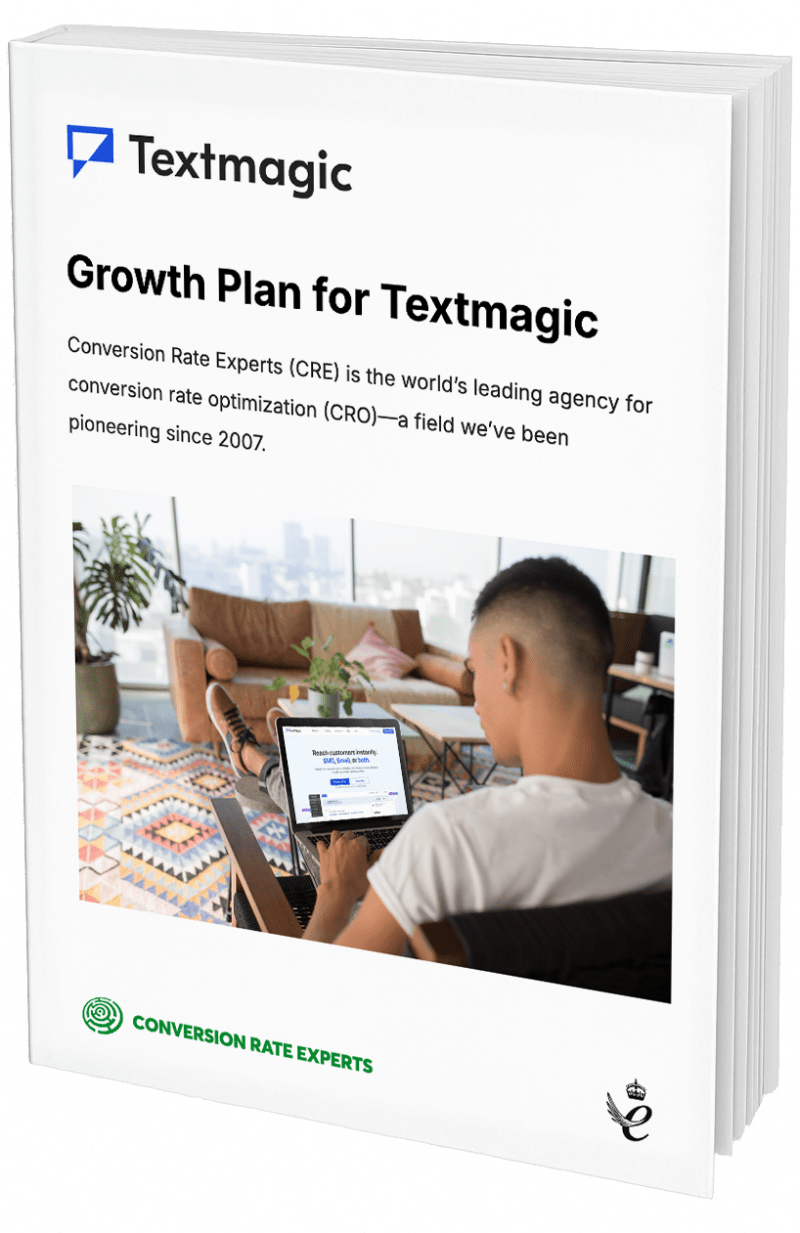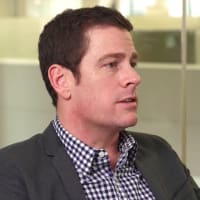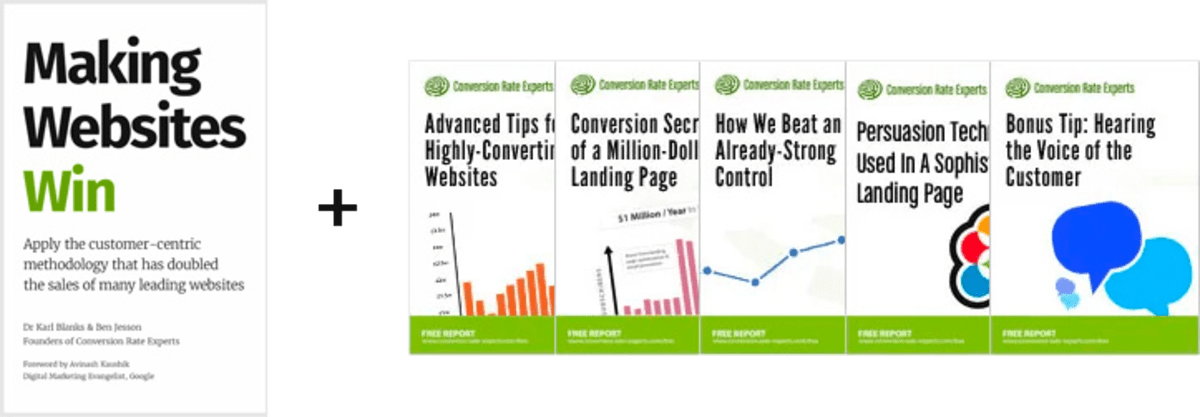Copywriting Friday: Breaking rules for fun and profit
Copywriting Friday highlights the tools and techniques of persuasive content. Some of the examples may seem dated, but the principles are timeless (and critical for conversion rate optimization). Enjoy.

Picasso shrugged and created a quick sketch on a napkin. “Oh, that’s magnificent!” she said. “What do I owe you?” He quoted some large amount. “Sir, I don’t want to be rude, but it only took you ten minutes to do the sketch!”
“Madam, you’re right. It took me ten minutes to make the sketch and 40 years to learn how to make it.”
Picasso was trained as a draftsman; in other words, he first learned how to create drawings with highly accurate and realistic depictions. Later in life, he became famous for his bizarre interpretations that broke many rules.
How does this apply to copywriting? It’s fine to break the rules as long as you master them first.
Meet David Deutsch, word artist
Today’s analysis relates to a piece that was written by David Deutsch. He’s one of the top copywriters alive today, with a very long list of split-tested wins or “controls” for major corporations including the legendary direct response publisher, Boardroom, Inc.
Deutsch mastered the “conventional wisdom” of copywriting long ago, so it’s instructive to see how he seemingly violates some of those rules. Or does he? Let’s dive in and find out.
The sales letter below is just the top of a web page that’s much longer. You can see a screen capture of the entire page here. And yes, the “design” is very much of its time. Don’t let that distract you from learning its valuable lessons.

Conventional wisdom: “People don’t want to read long letters.”
Deutsch’s letter is easily ten times the length you see above. How could he make such a rookie mistake? Because it’s not a mistake at all; it’s known as market-to-message match: the simple idea that your message should align with what your audience needs. If you had debilitating migraines and came across a very long page that was all about possible solutions, wouldn’t you read every word?
In the case of this letter, Deutsch is writing to other copywriters who just signed up for a webinar series where several legendary writers would share their secrets. If I endeavor to become an “A-list” writer, I’ll want to read it all.
Another way to think about it: There’s no such thing as too-long copy; only too-boring copy. Write as much as it takes to convey your message with interest and passion.
Can you think of situations where you hesitated to tell a longer story because you were warned against too-long copy? If your message is targeted to an audience that’s passionate about the topic, it may be worth testing that longer copy.
Conventional wisdom: “You must keep people’s attention by including visuals.”
It’s true that images can be highly effective. It may even be true that some things are impossible to describe without an image. It’s a matter of understanding your audience.
It may be hard to imagine writing to photographers about a new telephoto lens without including images, but Deutsch is writing to writers. If ever there was a group that’s comfortable with just words, it’s these people. Do we really need to see Tellman Knudson’s headshot if we know he’s a successful writer? Is anything meaningful accomplished by showing an image of a computer monitor with a webinar on it?
The context should dictate your decisions, not a general rule.
Conventional wisdom: “Sprinkle CTAs from the top of your message to the bottom.”
CTAs or “calls to action” take many forms, like “Buy Now” or “Subscribe.” The common practice of littering pages with a high density of CTAs seems to assume an odd scenario: A visitor is convinced to buy a product, does not see a CTA in the immediate vicinity, shrugs, and leaves. If that’s even possible, then the writer did a poor job of focusing desire for the offer.
In the case of Deutsch’s letter, a copywriter who’s convinced that these recordings could be career-changing will gladly look for the Buy Now button.
Is there a downside to too many CTAs? One of Deutsch’s principles is that the best writing does not sound like a sales pitch; it comes across as helpful and informative. Having multiple Buy Now or Sign Up buttons risks coming across as more of a hard sell.
Three seldom-used techniques
Not only does Deutsch depart from conventional wisdom, but he also employs three additional techniques that many writers don’t use or don’t know about.
1. Reinforce the last decision
Look at how this sales letter begins (after the headline):
Dear Friend,
Thank you and congratulations-you’re all signed up for OPERATION COPY QUICK-START!
I can’t wait for you to join me each week as I conduct in-depth interviews with the greatest collection of copywriters and entrepreneurs ever assembled and force them to spill the beans on how to:
- Write super-successful copy more quickly and more easily than you ever thought possible; and
- Multiply the money-making power of your copywriting by discovering how to do more with the copy you write. (You'll be amazed at how many thousands of dollars you're leaving on the table.)
The only way people are reading this page is if they just bought the webinar series seconds ago. Deutsch is careful to remind them that it was a smart decision. Contrast that with many sites where—immediately after you buy something—you see: “Wait! There’s more!” or words to that effect. It’s the instant upsell, which entirely focuses on how you should keep your credit card out to buy more. An upsell might be useful, but it doesn’t make you feel good about the decision you just made.
If you have any upsells, it’s worth checking to see that you reinforce the last buying decision people made. This not only applies to upsells on your site, but also to any emails you send out after that initial purchase.
2. Build the value and make the price the good news
If the readers of Deutsch’s letter are knowledgeable, then they’ll recognize many of the experts who will be interviewed. But the short bios in the sidebar do more than give their backgrounds—they increase the perceived value of the interviews. We hear about writers who make $100k from writing simple emails that take 10-12 minutes to write; an expert who’s written for 100 industries; and people who’ve become millionaires purely through their writing.
We then experience what’s called “anchoring”:
If you’re told about something that’s very expensive, it makes other prices cheap by comparison. Right after this language, we hear that the price of all the recordings and transcripts is $97. Even if readers did not explicitly anticipate a higher price, it’s likely that $97 came as a relief.
Where on your site could you reinforce the perceived value so the real value is a bargain by comparison? We don’t mean merely showing a higher price that’s crossed out. Consider how you can demonstrate substantially higher value by adding testimonials, listing the cost of alternatives to your product or service, or quantifying the value of time that your product or service saves.
3. Make the bonuses worth the price by themselves
The value build of the recordings and transcripts is likely enough to persuade many readers to invest $97 to get them. But there’s no downside to sweetening the pot: Deutsch adds four bonuses, any one of which could be worth $97. The overall effect of this piling-on of value is to end the mental calculation of “Is this worth it?” It’s no longer even a question.
Brilliance Alert: Deutsch saves the best for last. Read the description of the fourth bonus:
FREE BONUS 4: One of my favorite old books, How to Write Letters That Win.
This gem from the early 1900’s contains “247 pointers gathered from a study of 1200 actual letters.” (By the way, I’ll tell you a secret about old books on copywriting and direct mail: Much of the advice is truly unique, insightful, valuable, and extraordinarily applicable to copywriting, persuasion, and direct response today. What’s more, because these books are so little-known, the secrets they contain are that much more powerful, and give you an extraordinary competitive advantage.)
It would be easy for someone to have argued that “We should leave off this bonus; after all, it’s 100-year-old advice! How much could possibly be relevant now?” Instead, Deutsch flips that logic on its head: “Because these books are so little-known, the secrets they contain are that much more powerful, and give you an extraordinary competitive advantage.”
You can adopt this same approach without having to find a century-old text. Maybe you can get your hands on things like:
- Material that didn’t get published, perhaps for lack of time.
- Webinars, conference recordings, or transcripts.
- Checklists.
- Physical samples that were never sold because they were limited-run quantities.
The more unusual and limited the item, the more potential it may have as a bonus for some tier of buyer. Bonuses are not unusual; what’s compelling is when customers regard the bonuses as being of equal or greater value than the product itself.
Stand out for all the right reasons

Like the clients we work with, you likely face significant competition. Customers in competitive industries look at all that competition and call them “choices.” When you judiciously break established norms and add some of these seldom-used techniques we covered, customers will not consider you to be just another clone.
In situations where competitors have a hard time differentiating between themselves, these unusual angles may be just enough to make the sale.
See you next time on Copywriting Friday.
How much did you like this article?
What’s your goal today?
1. Hire us to grow your company
We’ve generated hundreds of millions for our clients, using our unique CRE Methodology™. To discover how we can help grow your business:
- Read our case studies, client success stories, and video testimonials.
- Learn about us, and our unique values, beliefs and quirks.
- Visit our “Services” page to see the process by which we assess whether we’re a good fit for each other.
- Schedule your FREE website strategy session with one of our renowned experts.
Schedule your FREE strategy session
2. Learn how to do conversion
Download a free copy of our Amazon #1 best-selling book, Making Websites Win, recommended by Google, Facebook, Microsoft, Moz, Econsultancy, and many more industry leaders. You’ll also be subscribed to our email newsletter and notified whenever we publish new articles or have something interesting to share.
Browse hundreds of articles, containing an amazing number of useful tools and techniques. Many readers tell us they have doubled their sales by following the advice in these articles.
Download a free copy of our best-selling book
3. Join our team
If you want to join our team—or discover why our team members love working with us—then see our “Careers” page.
4. Contact us
We help businesses worldwide, so get in touch!
© 2025 Conversion Rate Experts Limited. All rights reserved.















